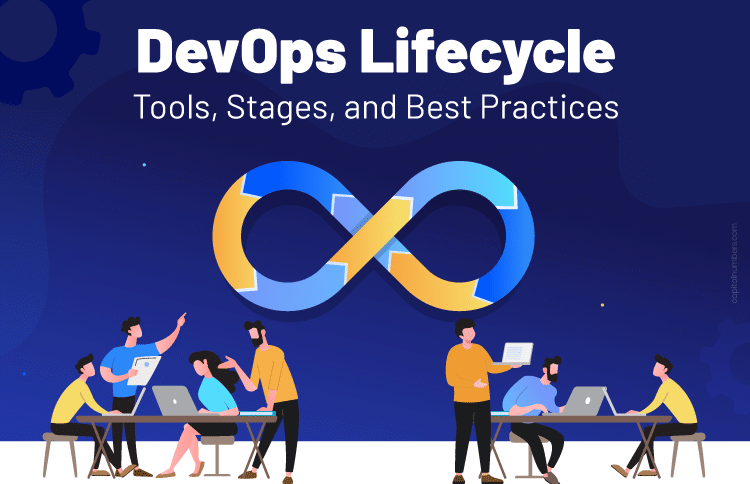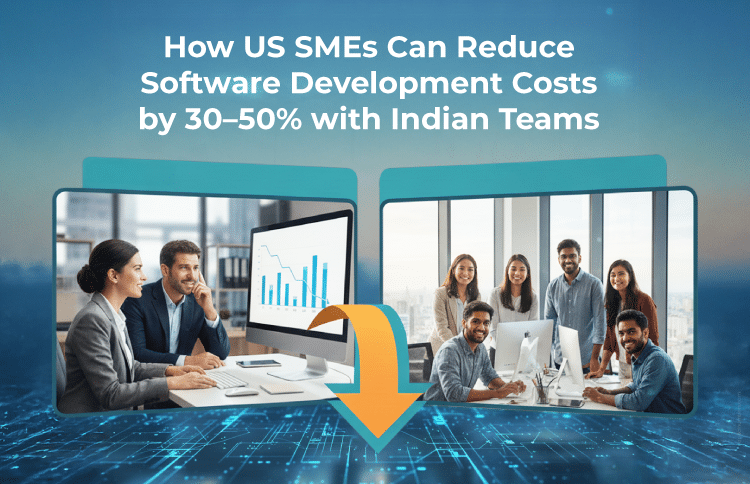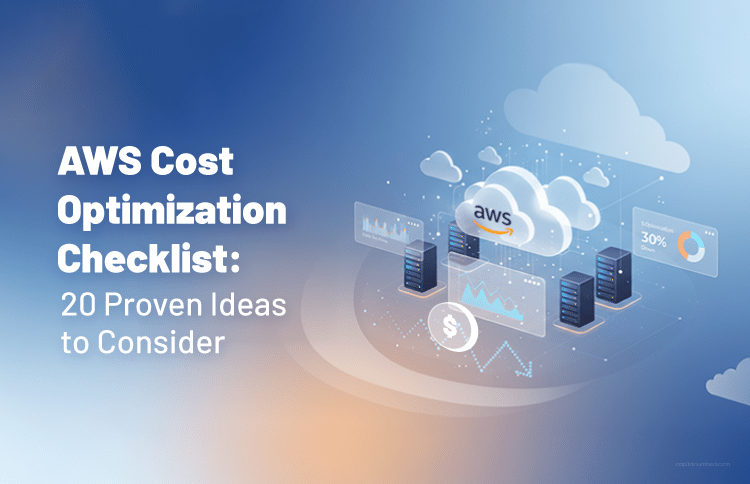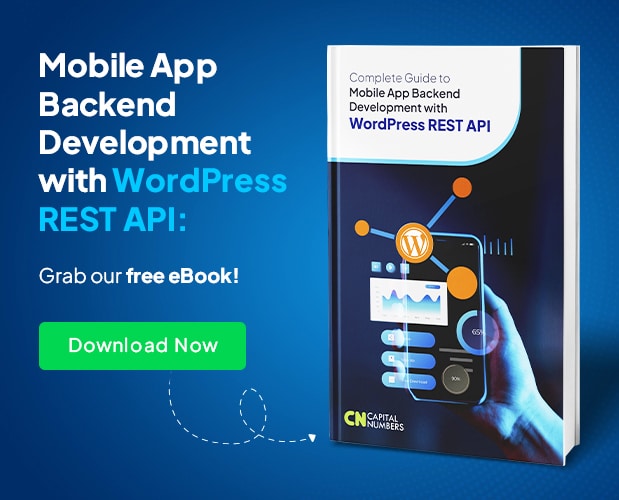DevOps Lifecycle: Tools, Stages, and Best Practices
Table of Contents
Struggling with slow release cycles, poor collaboration between teams, or the need to stay adaptable in your development process? DevOps can help. It’s not just a methodology – it’s a movement that’s reshaping how teams build, test, deploy, and improve software.
At its core, DevOps bridges the gap between development and operations, enabling teams to collaborate seamlessly. By accelerating software delivery, DevOps ensures faster releases with higher quality and reduced risk.
But DevOps methodology isn’t just a buzzword you hear in tech talks – it’s a complete lifecycle backed by tools, practices, and a collaborative culture. In this blog, we will discuss each stage of the DevOps lifecycle, discuss the tools that make it possible, and highlight best practices developers can adopt to deliver better software, faster.
What is DevOps Lifecycle?
The DevOps lifecycle is a continuous process that integrates development and operations to deliver software faster and more reliably. It includes seven key stages, including continuous development, integration, testing, deployment/delivery, monitoring, feedback, and operations. This cycle improves collaboration, speeds up releases, and ensures higher software quality.
DevOps is more than just a process – it’s a culture and mindset that encourages automation, continuous improvement, and teamwork between developers and IT operations. By aligning these teams, organizations achieve smoother workflows, greater efficiency, and secure, scalable systems.
Looking for End-to-End DevOps Services for Your Project?
At Capital Numbers, we deliver full-cycle DevOps services that accelerate releases, improve security, and ensure scalability. From CI/CD automation and cloud integration to monitoring and incident management, our team streamlines every stage of the software lifecycle. Partner with us to simplify operations, boost collaboration, and deliver reliable software with confidence. Contact us today!
Key Stages of the DevOps Lifecycle
The DevOps lifecycle consists of several stages, each playing an important role in how software is developed and delivered. Here’s a look at DevOps stages and how developers help make the process smoother, faster, and more reliable:
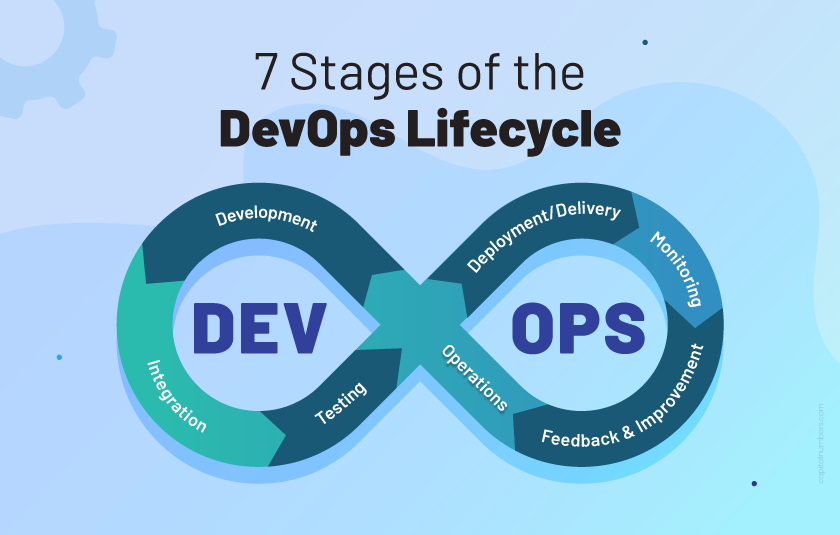
1. Continuous Development
What is it: Continuous Development is the first step in the DevOps cycle, where the initial planning, coding, and version control happen.
DevOps Tools: Git, GitHub, GitLab, and Bitbucket.
Developer Focus: This is where everything begins – DevOps engineers write modular, well-structured code that can be easily maintained and updated. With tools like Git, GitHub, and GitLab, you can manage version control and work through branching strategies (like Git Flow or trunk-based development) to keep things organized. In addition, teams often use artifact repositories such as JFrog Artifactory or Nexus Repository to store and manage build artifacts, ensuring consistent and reliable deployments. The goal? To set a solid foundation for everything that follows.
2. Continuous Integration (CI)
What is it: Continuous Integration is the practice of merging code regularly and automating the build process.
DevOps Tools: Jenkins, GitLab CI/CD, CircleCI, Travis CI, GitHub Actions.
Developer Focus: In CI, developers regularly push their code to a shared repository, triggering automated builds and tests. The primary focus of this DevOps stage is on writing unit tests to catch bugs early and maintain a stable build. By merging code frequently and avoiding big, messy merges, developers help the project stay on track. This is where DevOps best practices help make integration fast and reliable. Many teams also integrate code quality and security tools, such as SonarQube or Snyk, directly into the CI pipeline to detect vulnerabilities and enforce coding standards early.
3. Continuous Testing
What is it: Continuous Testing ensures that automated tests are run throughout the development process to catch issues early.
Types: Unit tests, integration tests, functional tests, performance tests.
DevOps Tools: Selenium, JUnit, TestNG, PyTest, and Cypress.
Developer Focus: This stage is about ensuring your code is in good shape before it moves forward. Developers use automated testing tools to catch issues early, focusing on test-driven development (TDD); writing tests before the actual code to ensure quality from the get-go. With continuous testing, the team can move fast without worrying about introducing bugs into the codebase. For enterprise-grade systems, continuous testing also includes performance and load testing using tools like JMeter or k6, and chaos testing (using tools like Chaos Monkey) to validate resilience under failure conditions.
You May Also Read: The Future of Software Testing: 10 Innovations to Follow
4. Continuous Deployment/Delivery (CD)
What is it? Continuous Delivery ensures that code is always ready for release, while Continuous Deployment automatically pushes changes to production once they pass tests.
DevOps Tools: Spinnaker, ArgoCD, Harness, and Jenkins X.
Developer Focus:
- Continuous Delivery: Developers ensure that code is always in a deployable state, but the actual release into production is triggered manually when needed. This makes it easier to deploy code whenever required.
- Continuous Deployment: Unlike Continuous Delivery, Continuous Deployment automates the entire process, pushing changes directly into production without any manual intervention. This makes deployment faster and more efficient, with every change getting automatically deployed once it’s tested and ready. Teams often use progressive delivery techniques such as blue-green deployments, canary releases, and feature flags (via tools like LaunchDarkly) to minimize risk and ensure smoother rollouts.
5. Continuous Monitoring
What is it: Continuous Monitoring means constantly observing how the software performs once it’s live.
DevOps Tools: Prometheus, Grafana, ELK/EFK stack, Datadog, and New Relic.
Developer Focus: Once the software is out there, the work doesn’t stop. Developers make sure the application runs smoothly by monitoring its performance in real-time. Using tools like Prometheus or Datadog, they track logs and respond to alerts, ensuring any issues are addressed right away. It’s about observability; building software that you can watch and improve, even after it’s live. In addition to monitoring and logging, modern teams adopt distributed tracing with OpenTelemetry, Jaeger, or Zipkin to gain end-to-end visibility across microservices and quickly diagnose performance bottlenecks.
6. Continuous Feedback & Improvement
What is it: Continuous Feedback involves gathering insights from users and stakeholders to improve the software continuously.
DevOps Tools: Jira, Slack integrations, and feedback loops from monitoring.
Developer Focus: Continuous feedback loops are essential for refining the product. Developers actively listen to users and stakeholders, using tools like Jira and Slack to quickly address bugs or add new features. The feedback helps them fine-tune the software and improve its performance, so it keeps getting better with every release.
You May Also Read: How to Choose Your Project Management Platform?
7. Continuous Operations
What is it: Continuous Operations ensures that everything runs smoothly in production, with automated scaling and incident management.
Activities: Automated scaling, patch management, incident response, and infrastructure reliability.
DevOps Tools: Kubernetes, Docker Swarm, Ansible, Terraform, AWS/GCP/Azure Ops tools.
Developer Focus: Once the application is live, developers focus on making sure it remains stable, scalable, and secure. They collaborate with the operations team to handle incidents, scale the application automatically, and keep everything running smoothly in this DevOps stage. Writing resilient code is key – code that’s fault-tolerant and ready for anything. It’s about ensuring uptime and performance, no matter what. Advanced operations also rely on service meshes (Istio, Linkerd) for traffic management and GitOps practices (ArgoCD, Flux) for managing infrastructure declaratively. Site Reliability Engineering (SRE) principles are often applied to ensure reliability and reduce toil.
You May Also Read: AWS vs Azure vs Google Cloud Platform: A Detailed Comparison
Phases for DevSecOps
Before we get into the additional phases of DevSecOps, let’s start by understanding what it is. It’s important to know the basics before exploring how it fits into the overall process.
What is DevSecOps?
DevSecOps is about making security everyone’s responsibility. Instead of adding security at the end, it’s built into every step of the process, from development to deployment, to catch and fix risks early.
Key Practices in DevSecOps:
- Continuous Security Testing: Security testing is automated and part of the CI/CD pipeline. This includes tools like Static Application Security Testing (SAST), Dynamic Application Security Testing (DAST), and dependency scanning, which help spot issues early in the development process.
- Infrastructure Security: Infrastructure as Code (IaC) is used to manage infrastructure, and security checks are built into the process. Tools like Terraform compliance and Ansible hardening make sure that security is part of the infrastructure setup.
- Secrets Management: Managing sensitive information securely is crucial. Tools like HashiCorp Vault and AWS Secrets Manager help keep secrets safe and prevent accidental leaks.
- Policy as Code: Automating security and compliance checks helps ensure that policies are consistently applied across all environments. Tools like Open Policy Agent help enforce security and compliance automatically. With rising supply chain attacks, DevSecOps pipelines now often generate and verify a Software Bill of Materials (SBOM) using tools like Syft or CycloneDX, ensuring transparency in dependencies.
Tools:
- SonarQube: Helps find and fix security vulnerabilities in code.
- Snyk: Identifies and fixes security issues in dependencies.
- Aqua Security: Provides security for containerized applications.
- Trivy: Scans containers for security vulnerabilities.
- OWASP ZAP: Finds security flaws in web applications.
Traditional Software Development Lifecycle vs DevOps Lifecycle
Traditional SDLC is like constructing a bridge brick by brick – methodical, slow, and reliant on handoffs between isolated teams. The DevOps lifecycle rewrites the blueprint: it’s fast, fluid, and collaborative, where development and operations move in sync to deliver smarter, faster, and more resilient software.
| Aspect | Traditional SDLC | DevOps Lifecycle |
|---|---|---|
| Team Structure | Siloed teams (Dev vs Ops) | Unified, collaborative teams |
| Development Approach | Sequential (Waterfall or V-model) | Iterative and continuous |
| Speed of Delivery | Slower, with long release cycles | Rapid, frequent releases |
| Automation | Minimal; mostly manual processes | Extensive use of automation (CI/CD, testing, deployment) |
| Feedback Loop | Delayed feedback after full release | Continuous feedback throughout the lifecycle |
| Testing | Performed after the development phase | Integrated and automated throughout |
| Deployment | Manual, risky, and infrequent | Automated, reliable, and frequent |
| Monitoring & Maintenance | Reactive – issues handled post-release | Proactive – real-time monitoring and quick fixes |
| Scalability & Flexibility | Limited; changes are costly | High; changes are fast and adaptive |
| Culture | Process-driven, rigid roles | Culture of collaboration, ownership, and agility |
Common Challenges in the DevOps Lifecycle
While the DevOps lifecycle brings many benefits, it’s not without its challenges. Let’s take a look at some of the key hurdles that teams often face:
Tool Overload
With countless DevOps tools out there, teams often struggle to pick the right ones. Using too many tools that don’t integrate smoothly can lead to confusion and slow down the entire DevOps workflow. The key is to choose tools that align with the team’s needs and ensure they work together seamlessly.
Resistance to Culture Change
The core of the DevOps culture is collaboration between development and operations teams. However, shifting to this new way of working can be tough. Some team members may resist the change, especially if they’re used to traditional methods. Overcoming this resistance is crucial for success, and it requires strong leadership and clear communication.
Maintaining Pipeline Speed vs. Quality
One of the main goals of DevOps methodology is to deliver software quickly. But this can sometimes clash with maintaining high quality. DevOps engineers must balance pipeline speed with thorough testing and quality checks to ensure software is bug-free. It’s a constant balancing act between moving fast and not cutting corners.
Security Gaps If DevSecOps Is Ignored
Security should never be an afterthought. If DevSecOps isn’t integrated into the DevOps stages, security gaps can appear. Without continuous security testing and monitoring, vulnerabilities can slip through and cause major issues down the road. It’s crucial to make security a shared responsibility throughout the lifecycle to avoid these risks.
Developer Burnout from Frequent Releases
With DevOps best practices, teams release updates often. While this helps deliver new features quickly, it can also cause stress for developers. The constant pressure of frequent releases and the fast nature of the DevOps lifecycle can be tough. To avoid this, it’s important to keep a manageable rhythm and ensure developers aren’t stretched too thin.
DevOps Best Practices to Follow
Implementing DevOps methodology effectively isn’t just about tools – it’s about adopting the right habits and mindset. Here are some DevOps best practices that help teams succeed at every step of the DevOps lifecycle:
Write Small, Frequent Commits
Instead of waiting days or weeks to push big changes, developers commit code in small chunks. This makes integration smoother, reduces conflicts, and makes it easier to spot and fix issues quickly.
Automate Everything You Can
Automation is the backbone of the DevOps workflow. From running builds and tests to deploying code, automating repetitive tasks saves time, reduces errors, and speeds up delivery.
Shift-Left Testing
Testing early and often – known as ‘shifting left’ – helps catch bugs before they grow into bigger problems. This approach ensures that high-quality software is delivered faster and with fewer issues.
Prioritize Observability
Good observability means having detailed logs, metrics, and tracing in place. This gives teams real-time insight into performance, helps identify problems early, and makes applications more reliable in production.
Foster Collaboration and Knowledge Sharing
Teamwork is the key part of DevOps culture. Developers, operations, and other stakeholders need to work closely, share knowledge, and communicate openly to keep projects moving smoothly.
You May Also Read: Cloud DevOps: How It’s Transforming Custom Application Development
Why the DevOps Lifecycle Matters?
The DevOps lifecycle isn’t just a checklist – it’s a smarter way to build, test, and deliver software. Each stage adds value, and with the right tools and practices, teams can move faster and keep quality high. DevOps is about teamwork, collaboration, and making workflows run smoothly.
For DevOps engineers, choosing this approach means building reliable, scalable systems while keeping things manageable. By following best practices and focusing on continuous improvement, you can create smoother deployments, stronger security, and software that truly grows over time.
Why Choose Capital Numbers for DevOps Services?
Partnering with the right team can make all the difference in your DevOps journey. At Capital Numbers, we bring the expertise and tools needed to help DevOps engineers and teams succeed with confidence.
- End-to-End Expertise: From setting up workflows to managing deployments, our team covers every stage of the DevOps lifecycle so you can focus on innovation.
- Tailored Solutions: We design workflows and practices that fit your specific needs, making DevOps adoption smoother and more effective.
- Scalability and Security: Our approach ensures that systems are reliable, scalable, and secure, ready to handle growth without downtime.
- Proven Track Record: With years of experience across industries, we’ve successfully delivered DevOps solutions that drive efficiency and long-term value.
Ready to optimize your DevOps process? Let’s connect and explore how we can help you optimize your workflows and accelerate software delivery.

